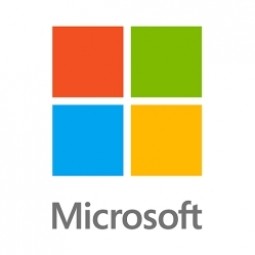
Technology Category
- Infrastructure as a Service (IaaS) - Cloud Databases
- Infrastructure as a Service (IaaS) - Private Cloud
Applicable Industries
- Healthcare & Hospitals
The Customer
GE Healthcare
About The Customer
A division of General Electric, GE Healthcare provides medical imaging and information technologies, medical diagnostics, patient monitoring systems, performance improvement, drug discovery, and biopharmaceutical manufacturing technologies.
The Challenge
Two of the company’s businesses—GE Healthcare IT and GE Healthcare Global Services—sought to provide customers with more flexible, yet secure cloud solutions. GE Healthcare IT software and services for Integrated Care create actionable insight across the healthcare system and the care pathway, enabling better clinical and financial outcomes. Healthcare Global Services help health systems manage their operational resources to deliver high quality care safely, efficiently, and affordably. Both business groups knew that while healthcare providers worldwide need better insight and control over data to both improve efficiency and improve clinical care, they must also protect patient information and meet increasingly challenging regulatory requirements Moreover, the company sought to meet its goals without investing additional time and money in on-premises infrastructure.
In the United States, GE Healthcare sought to simplify Meaningful Use (MU) reporting to help facilitate the MU attestation required to qualify for incentives from programs established through the Health Information Technology for Economic and Clinical Health Act (HITECH Act). Customers in other countries also have compliance needs, and GE Healthcare wanted a solution that it could easily adapt to a wide range of privacy and security requirements.
The Solution
GE Healthcare has an ecosystem of cloud partners and decided to take advantage of the Microsoft Azure platform with its infrastructure-as-a-service (IaaS) offering. Moving to the cloud would offer multiple benefits, including easier, more centralized software distribution and management, and better scalability. The company was also drawn to the Microsoft Azure environment’s readiness to help customers meet their compliance requirements in the healthcare industry. In addition to technical safeguards, Azure offers a HIPAA Business Associate Agreement (BAA) in which Microsoft commits to adhere to certain security and privacy provisions set forth in HIPAA and the HITECH Act.
GE Healthcare and Microsoft kicked off a proof of concept for transitioning apps that were running in a production environment on-premises to Microsoft Azure. The transition was seamless using Microsoft Azure Virtual Machines (VMs). The VMs host multiple application components, including database instances running on SQL Server software and business logic running in Microsoft .NET Framework assemblies. Both SQL Server and .NET on Microsoft Azure VMs provide full compatibility with on-premises infrastructure. In addition, the SQL Server AlwaysOn feature ensures high availability.
The project soon extended to multiple applications; some that were in production and some new. When GE Healthcare saw what Microsoft Azure could do in the proof of concept, it understood the value it could bring to multiple healthcare scenarios.
GE Healthcare and Microsoft kicked off a proof of concept for transitioning apps that were running in a production environment on-premises to Microsoft Azure. The transition was seamless using Microsoft Azure Virtual Machines (VMs). The VMs host multiple application components, including database instances running on SQL Server software and business logic running in Microsoft .NET Framework assemblies. Both SQL Server and .NET on Microsoft Azure VMs provide full compatibility with on-premises infrastructure. In addition, the SQL Server AlwaysOn feature ensures high availability.
The project soon extended to multiple applications; some that were in production and some new. When GE Healthcare saw what Microsoft Azure could do in the proof of concept, it understood the value it could bring to multiple healthcare scenarios.
Operational Impact

Case Study missing?
Start adding your own!
Register with your work email and create a new case study profile for your business.
Related Case Studies.

Case Study
Hospital Inventory Management
The hospital supply chain team is responsible for ensuring that the right medical supplies are readily available to clinicians when and where needed, and to do so in the most efficient manner possible. However, many of the systems and processes in use at the cancer center for supply chain management were not best suited to support these goals. Barcoding technology, a commonly used method for inventory management of medical supplies, is labor intensive, time consuming, does not provide real-time visibility into inventory levels and can be prone to error. Consequently, the lack of accurate and real-time visibility into inventory levels across multiple supply rooms in multiple hospital facilities creates additional inefficiency in the system causing over-ordering, hoarding, and wasted supplies. Other sources of waste and cost were also identified as candidates for improvement. Existing systems and processes did not provide adequate security for high-cost inventory within the hospital, which was another driver of cost. A lack of visibility into expiration dates for supplies resulted in supplies being wasted due to past expiry dates. Storage of supplies was also a key consideration given the location of the cancer center’s facilities in a dense urban setting, where space is always at a premium. In order to address the challenges outlined above, the hospital sought a solution that would provide real-time inventory information with high levels of accuracy, reduce the level of manual effort required and enable data driven decision making to ensure that the right supplies were readily available to clinicians in the right location at the right time.

Case Study
Gas Pipeline Monitoring System for Hospitals
This system integrator focuses on providing centralized gas pipeline monitoring systems for hospitals. The service they provide makes it possible for hospitals to reduce both maintenance and labor costs. Since hospitals may not have an existing network suitable for this type of system, GPRS communication provides an easy and ready-to-use solution for remote, distributed monitoring systems System Requirements - GPRS communication - Seamless connection with SCADA software - Simple, front-end control capability - Expandable I/O channels - Combine AI, DI, and DO channels

Case Study
Driving Digital Transformations for Vitro Diagnostic Medical Devices
Diagnostic devices play a vital role in helping to improve healthcare delivery. In fact, an estimated 60 percent of the world’s medical decisions are made with support from in vitrodiagnostics (IVD) solutions, such as those provided by Roche Diagnostics, an industry leader. As the demand for medical diagnostic services grows rapidly in hospitals and clinics across China, so does the market for IVD solutions. In addition, the typically high cost of these diagnostic devices means that comprehensive post-sales services are needed. Wanteed to improve three portions of thr IVD:1. Remotely monitor and manage IVD devices as fixed assets.2. Optimizing device availability with predictive maintenance.3. Recommending the best IVD solution for a customer’s needs.

Case Study
HaemoCloud Global Blood Management System
1) Deliver a connected digital product system to protect and increase the differentiated value of Haemonetics blood and plasma solutions. 2) Improve patient outcomes by increasing the efficiency of blood supply flows. 3) Navigate and satisfy a complex web of global regulatory compliance requirements. 4) Reduce costly and labor-intensive maintenance procedures.

Case Study
Cloud-based healthcare solution for Royal Philips
Royal Philips wanted to launch its cloud-based healthcare solution HealthSuite Digital Platform in China to deliver services to help cope with challenges related to urbanization and population growth. Philips wanted to achieve this goal by combining mobile, cloud computing and big data technologies. To bring this platform and product to market, Philips required cloud computing and local technical service capabilities in China, in addition to a flexible IT infrastructure that could handle user requests.








